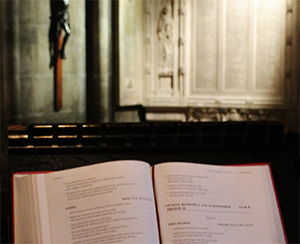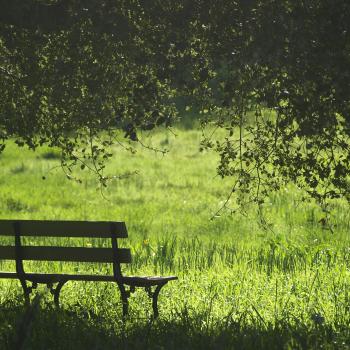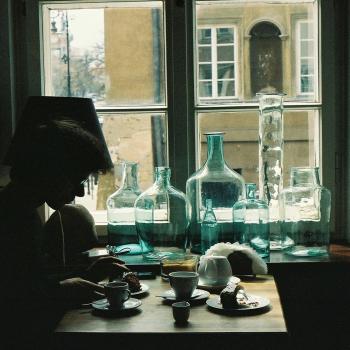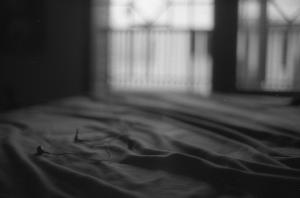 Continued from yesterday.
Continued from yesterday.
Gioia seems to be suggesting two conditions necessary for a resurgence of Catholic literature. The first is the arrival of a “few innovators” who will provide a “cultural catalyst,” and the second is that the “Catholic writer recover confidence in his or her own spiritual, cultural, and personal identity.” Reasonable enough, right?
However, if I understand him correctly, due to the “vast impoverishments” in the arts and the Church caused by the “schism between Christianity and the Arts” things are looking pretty bleak for a renaissance anytime soon.
I say this based on the lack of generosity (and, frankly, taste) among Catholics and Catholic institutions with cultural influence and monetary wealth, and due to the fact that we (apparently, the mediocre) are essentially being told to sit tight and wait until innovative saviors come along. I think this is the exact opposite of what our approach should be.
As Randy Boyagoda says in his fine First Things essay, “I’m actually sick of hearing about them . . .”–“them” being O’Connor, Merton, Percy, etc. They are dead. They are not coming back. So what are we going to do?
I’m not suggesting that I, or anyone I know for that matter is the second-coming of O’Connor, Merton, or Percy. (That’s a foolish thing to hope for, as far as I’m concerned, like waiting for the next John Coltrane or Andy Warhol; their voices and visions are so distinct as to be irreproducible.) What I’m suggesting is that we start embracing the many skilled literary writers who also identify as Catholic—practicing, lapsed, Latin Rite, schismatic, I don’t give a damn, here comes everybody, right?—and stop waiting around for those few innovators that Gioia speaks of.
Waiting creates a situation that breeds philistinism; a sense of not good enough; a sense of who do they think they are? In other words, waiting creates complainers and explainers, instead of do-ers. And that kind of attitude will just prolong this torpor. I know because I’ve fallen into it, too.
Might this be what has happened within the Catholic press and the Catholic intelligentsia? Have these communities, in light of all the Church’s bad press and dwindling cultural influence, become even more insular, exclusive, and, in the end, torpid?
Waiting is antithetical to the creation not just of art, but of community as well. This is what Lewis Hyde (author of the The Gift) has been writing about for the past four decades. One cannot wait for some inspired genius to come along and save us; the creative act must engaged in and shared openly, freely, regularly, and un-self-consciously, without concern as to whether it is “innovative” or whether it will serve as a catalyzing force.
Hyde writes, “…the gift [of creativity] is lost in self-consciousness. To count, measure, reckon value, or seek the cause of a thing” will kill any possibility that the work will become a true catalyzing force, because such art is selfish and fails to “draw each of its participants into a wider self.”
It’s pretty to think so, right? But that’s not the most challenging part. Hyde’s biggest challenge to us is his view that because the most affecting art is made when one conceives it as a gift—unasked for; made without any expectation of a return—it subverts all expectations about life as a free-market capitalist: that time is money; that the manufacture of things should be governed by principles of supply and demand, instead of by need. Which is to say that though art is not necessary, we need it.
That’s not to say that we should embrace well-intentioned mediocrity, but it is to say—and here I agree 100% with Gioia—that we need patrons, patrons who challenge, motivate, and support individual artists, not just “the Arts” in the form of big checks for brick and mortar projects.
I’m hesitant to bite the hand that feeds me, but not since I was an undergrad at Notre Dame eating in South Dining Hall has a Catholic institution really fed me. I’m being a bit hyperbolic, sorry. The wonderful folks at St. Peter Clavier Catholic Worker House in South Bend fed me and many others much less fortunate than me. Gregory Wolfe’s ecumenically-minded journal IMAGE, while not able to pay its contributors what the Condé Naste glossies pay, feeds me, and many others, artistically and spiritually by providing a venue for religious writers and artists to publish work that is, first and foremost, good art.
Interestingly, the institution that has done the most to feed me as an artist lately is secular. The University of Southern California’s Institute for Advanced Catholic Studies selected me as a fellow and is paying me, and five other early career writers, a nice stipend to encourage the completion of a book project. On top of that we are meeting four times over the next two years for weekend-long seminars led by Gregory Wolfe to discuss our work, share our progress, and discuss the ways that our various relationships to Catholicism (and they are various) inform our artistic lives. Let me emphasize that again, a secular institution in La-La Land is taking the lead in promoting Catholic literary culture in the United States.
You should know that I did not finish this piece that morning in the coffee shop. Despite my best intentions, I could not force it into existence before making the walk back to campus to teach. Deadline blown and running late for class, I had to take the shorter, more direct route along the highway. It had begun to snow again and the wind blew such that it was hard to see, but I knew that my students would understand.
Though I don’t work at a religiously affiliated school, it is a school dedicated to the arts, and so it is a religious institution of a kind; a place where no one is waiting for the next few innovators to come along, because there is a sense that everyone here is an innovator. This is especially true when you consider the etymology of “innovative”: “to introduce as new,” from Latin innovatus, past participle of innovare, “to renew, restore; to change,” from in- “into” + novus “new”. Meaning, “make changes in something established.”
In other words, there is an unspoken but commonly held belief that to make at all is an act of renewal and restoration, or as Flannery O’Connor had it, all art is “incarnational,” a glorifying of what is such that we see it anew, appreciate it—value it.
Catholics are not the only ones who have lost this sense of the importance of incarnational making; it is a first-world problem—perhaps the biggest first-world problem, because it represents a disavowal of our common humanity, our shared spiritual poverty, a condition that leads to a belief that we are our own light, a belief explored and critiqued in our most lasting art.
Let me humbly, then, submit an alternative solution for recovering the kind of spiritual, cultural, and personal identity Gioia speaks of: We must move forward and throw off whatever self-consciousness, self-loathing, and guilt we might feel for remaining Catholic, being an apologist, or even just telling people, as I admit I sometimes do in certain situations when someone as just uttered something profoundly anti-Catholic, that I was “raised Catholic,” and make art.
As Father James Schall points out, quoting William Styron’s Set This House on Fire, “You sin in this guilt of yours. You sin in your guilt.”
But “even sin serves.” And even the most virulent anti-Catholic must admire, or at least stand agog, at this theological tenet. It is an understanding of humanity that we need, lest we fall further into despair.
To me, this is what makes a writer Catholic, his or her ability to embrace the subversive power of small-c catholicism, interested in the way that all things that rise, and even those that fall, converge.
David Griffith is the author of A Good War is Hard to Find: The Art of Violence in America (Soft Skull). He is the Director of Creative Writing at Interlochen Center for the Arts in Michigan where he lives with his wife, fellow Good Letters contributor Jessica Mesman Griffith, and children, Charlotte and Alexander. His essays and reviews have appeared in Image, Utne Reader, The Normal School and online at killingthebuddha.com. He blogs at Pyramid Scheme.











